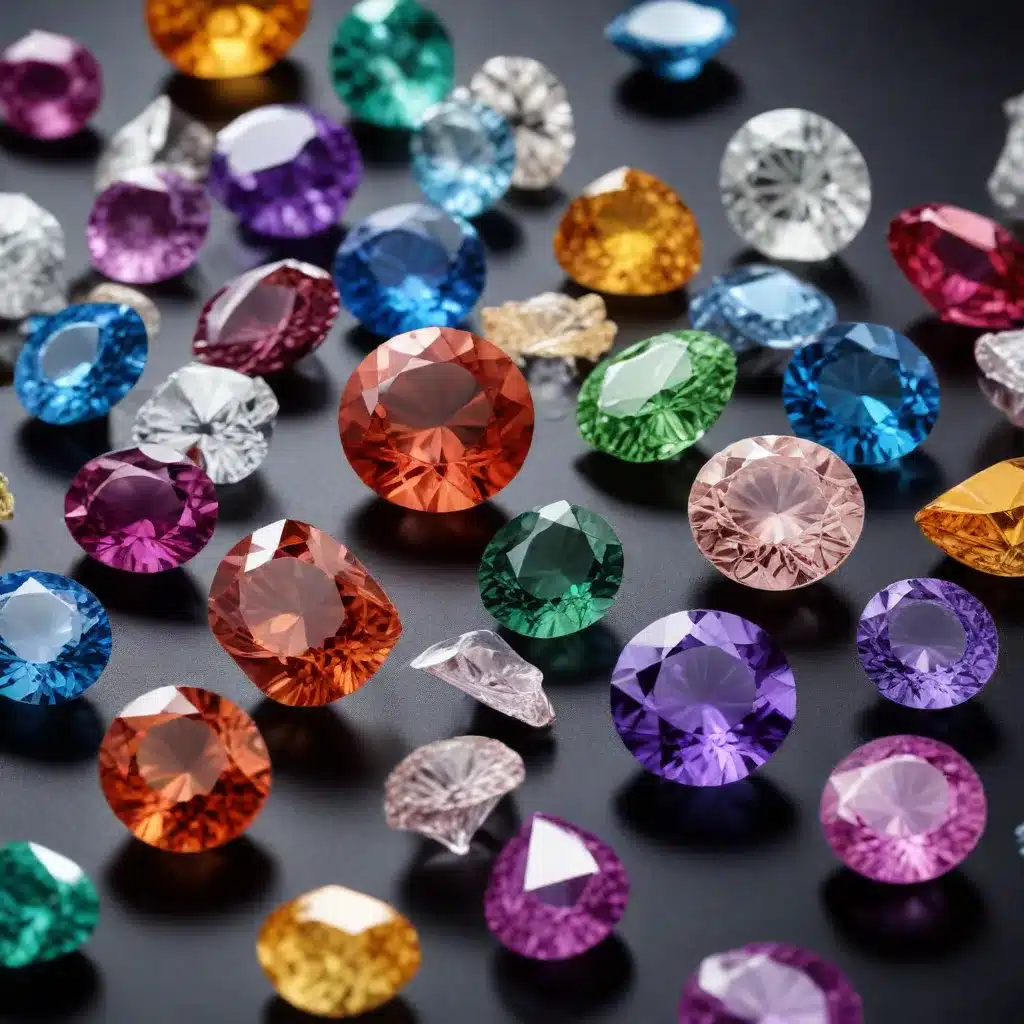
In the captivating realm of gemstones, a revolutionary transformation is unfolding – the rise of lab-grown gems. These sparkling marvels, born from the convergence of science and artistry, are redefining the way we perceive and acquire precious stones. No longer confined to the depths of the Earth, the allure of diamonds, rubies, and emeralds can now be cultivated in the controlled environments of specialized laboratories.
The Science of Lab-Grown Gemstones
Fundamentals of Gemstone Formation
Gemstones are the result of complex geological processes, formed under immense heat and pressure deep within the Earth’s crust over millions of years. This natural formation is the foundation upon which laboratory-grown gems are based. By understanding the fundamental principles of crystal growth, scientists have developed innovative techniques to harness the same forces that shape nature’s treasures.
Synthetic Gemstone Production Processes
The two primary methods for producing lab-grown gemstones are Chemical Vapor Deposition (CVD) and High Pressure-High Temperature (HPHT). In the CVD process, a diamond seed is placed in a vacuum chamber filled with carbon-rich gases. As these gases are heated, the carbon atoms separate and deposit onto the seed, layer by layer, eventually forming a full-grown diamond. The HPHT method, on the other hand, involves subjecting a carbon source to extreme heat and pressure, replicating the natural conditions under which diamonds are formed.
The Chemical Composition of Lab-Grown Gems
Lab-grown gemstones are not merely imitations or substitutes; they are authentic, genuine gems with the same chemical composition and crystalline structure as their natural counterparts. The only distinguishing factor is their origin – while natural gems are formed deep within the Earth’s crust, lab-grown gems are cultivated in a controlled laboratory setting. This distinction has significant implications for the gemstone industry and the consumers who value both the beauty and the story behind their prized possessions.
Advantages of Lab-Grown Gemstones
Cost-Effectiveness
One of the most compelling advantages of lab-grown gemstones is their affordability. The accelerated production process and the elimination of mining costs allow lab-grown gems to be priced 30-40% lower than their natural equivalents, making them an accessible choice for a wider range of consumers.
Ethical and Sustainable Sourcing
The gemstone industry has long been plagued by concerns over human rights abuses and environmental impact associated with traditional mining practices. Lab-grown gems, however, offer a guilt-free alternative, as they are produced in a controlled environment free from the ethical and ecological concerns that often shroud natural gemstones.
Consistent Quality and Reliability
Lab-grown gems boast a level of consistency and quality that is often unmatched in natural gemstones. By carefully controlling the production environment, scientists can ensure that each lab-grown gem meets the highest standards of clarity, color, cut, and carat weight – a crucial advantage for discerning consumers and jewelry designers.
Applications of Lab-Grown Gemstones
Jewelry and Fashion
The rise of lab-grown gems has sparked a wave of innovation in the jewelry and fashion industries. Designers are increasingly incorporating these ethically sourced, visually stunning stones into their collections, creating unique and personalized pieces that cater to the growing demand for sustainable luxury. From engagement rings to statement necklaces, lab-grown gems are becoming a sought-after choice for the modern, environmentally conscious consumer.
Industrial and Technological Uses
The applications of lab-grown gemstones extend far beyond the realm of jewelry. These gems, with their exceptional hardness, thermal conductivity, and optical properties, have found increasing use in various industrial and technological applications, such as optics, electronics, and abrasives.
Artistic and Decorative Purposes
The versatility of lab-grown gems extends to the world of art and decoration. Their ability to be created in a wide range of colors and sizes has allowed artists and designers to explore new frontiers of creativity, incorporating these sparkling marvels into stunning works of art, sculptures, and unique home decor pieces.
The Future of Lab-Grown Gemstone Technology
Advancements in Manufacturing Techniques
As the demand for lab-grown gemstones continues to grow, manufacturers are constantly exploring new and innovative ways to enhance the production process. Ongoing research and development aim to improve efficiency, reduce energy consumption, and expand the range of gemstone varieties that can be cultivated in the laboratory setting.
Expanding the Variety of Lab-Grown Gems
While diamonds have been the primary focus of lab-grown gemstone production, the future holds the promise of a far more diverse gemstone collection. Researchers are making strides in developing lab-grown versions of other precious gems, such as rubies, sapphires, and emeralds, further expanding the options available to conscious consumers and designers.
Environmentally Friendly Gemstone Production
As the world becomes increasingly aware of the environmental impact of traditional mining practices, the importance of sustainable and eco-friendly gemstone production has never been more paramount. Lab-grown gems, with their minimal carbon footprint and ethical sourcing, are poised to play a leading role in shaping a more sustainable future for the gemstone industry.
The rise of lab-grown gemstones represents a pivotal moment in the history of the gem and jewelry industry. These marvels of science and technology offer a unique combination of beauty, affordability, and ethical considerations, making them a compelling choice for the discerning consumer of the 21st century. As the industry continues to evolve, the future of gemstones lies in the harmonious blend of natural wonders and cutting-edge innovation, where the allure of the Earth’s treasures meets the responsible stewardship of our planet. Visit Shelby Gem Factory to explore our collection of lab-grown gems and discover the marvels of this 21st-century revolution in the world of precious stones.

